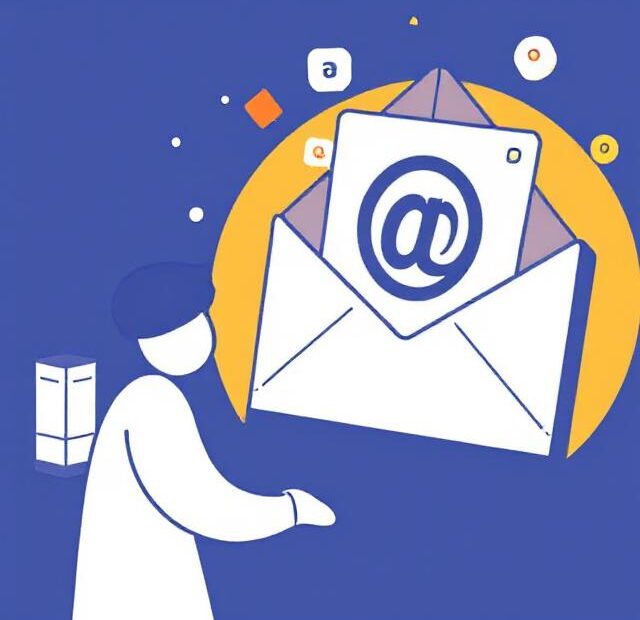In today’s competitive digital marketing landscape, sending the same generic email to your entire mailing list simply doesn’t work. Audiences expect more — they want emails that feel like they were created specifically for them. That’s where email personalization comes in. By tailoring your messages based on user data, behavior, and preferences, you can create stronger connections, boost open rates, and ultimately increase conversions.
Why Email Personalization Works
Email personalization is not just about inserting a recipient’s name in the subject line. It’s about crafting relevant, timely, and valuable content for each segment of your audience. When emails feel personal, readers are more likely to engage, trust your brand, and take action.
Research shows that personalized email campaigns can deliver up to 6x higher transaction rates compared to non-personalized campaigns. This is because personalization creates a sense of relevance and urgency, which motivates users to click, read, and convert.
Key Benefits of Email Personalization
-
Higher Open Rates
Personalized subject lines stand out in a crowded inbox. Using details like location, past purchases, or browsing behavior can pique curiosity and improve open rates. -
Better Click-Through Rates (CTR)
When the email content aligns with the user’s interests or recent actions, they’re more likely to click through to your website. -
Improved Customer Relationships
Personalization fosters trust. When customers feel you understand them, they’re more inclined to remain loyal to your brand. -
Increased Conversions and Sales
Personalized recommendations and targeted offers can drive customers directly to the checkout page.
Effective Email Personalization Strategies
1. Use Behavioral Data
Behavior-based personalization involves tracking actions such as purchases, downloads, website visits, and cart abandonment. For example:
-
Sending a reminder email when a customer leaves items in their cart.
-
Offering related product suggestions after a purchase.
2. Segment Your Audience
Divide your email list into smaller, more focused segments based on demographics, interests, or buying stage. This ensures the right message reaches the right people.
Example segments include:
-
New subscribers who need onboarding content.
-
Repeat customers who could benefit from loyalty rewards.
-
Inactive subscribers who need re-engagement campaigns.
3. Personalize Beyond the First Name
While using someone’s name is a good start, go further by referencing their past purchases, browsing habits, or specific needs. For example:
“Hi Sarah, we noticed you’ve been looking at our eco-friendly kitchen products. Here’s a special discount just for you.”
4. Optimize Send Times
Analyze when your subscribers are most active and send your emails during those peak engagement hours. Many email marketing tools offer send-time optimization features.
5. Use Dynamic Content
Dynamic content allows you to change images, CTAs, and copy based on the recipient’s profile. For example, a travel company can show different destinations to subscribers based on their location.
Examples of Email Personalization in Action
-
E-commerce Stores: Sending “Back in Stock” notifications for products customers previously viewed.
-
SaaS Companies: Offering tutorials or feature updates based on the tools users have tried.
-
Travel Agencies: Suggesting vacation packages similar to trips the subscriber has taken before.
Best Practices for Email Personalization
-
Respect Privacy
Always be transparent about how you collect and use customer data. Include a clear privacy policy. -
Avoid Over-Personalization
Using too much personal information can make users uncomfortable. Keep it relevant and natural. -
Test and Optimize
Run A/B tests on subject lines, content, and CTAs to determine what resonates best with your audience. -
Automate Where Possible
Use marketing automation platforms to trigger personalized emails based on real-time user behavior.
Measuring Success
To ensure your email personalization efforts are effective, track metrics such as:
-
Open Rate: Are more people opening your personalized emails?
-
CTR: Are recipients clicking through to your site?
-
Conversion Rate: Are they taking the desired action?
-
Revenue per Email: How much income is each personalized email generating?
Analyzing these metrics helps you refine your strategy over time for maximum results.
Final Thoughts
Email personalization is one of the most powerful tools in your digital marketing arsenal. When done right, it creates genuine connections with your audience, keeps your brand top of mind, and significantly boosts conversions. By using data-driven insights, segmentation, and dynamic content, you can craft emails that your subscribers look forward to receiving — and that they act on.
Start small by personalizing subject lines and segmenting your list, then gradually incorporate advanced tactics like behavioral triggers and dynamic content. The more relevant and valuable your emails become, the greater your success in turning readers into loyal customers.
Also, you can learn more about Plugin vs Theme here.
